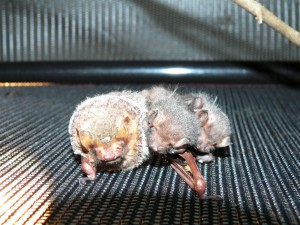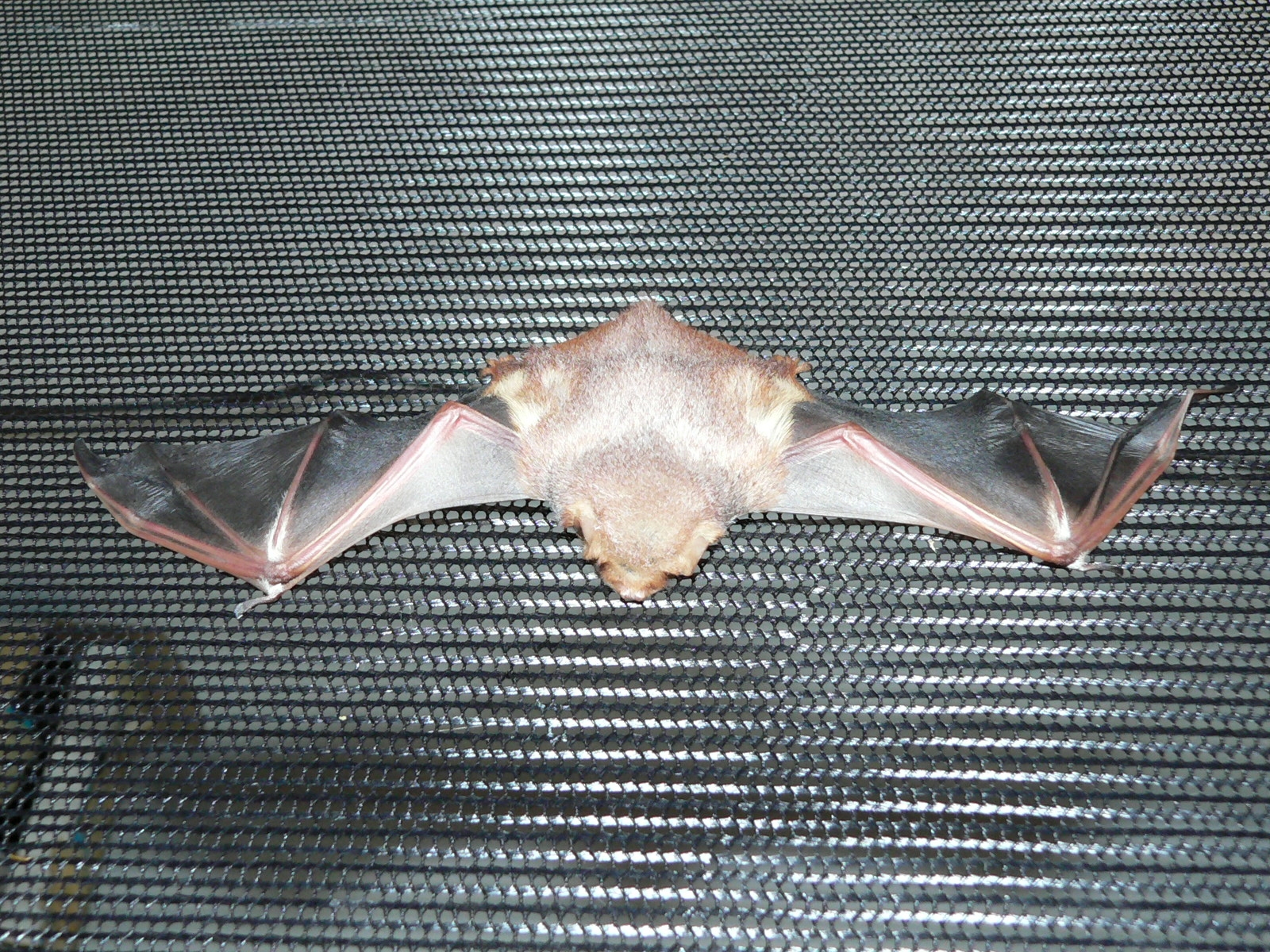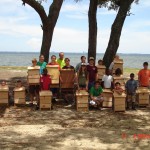by Carrie Stevenson | Apr 21, 2014
As spring commences and young wildlife of all species are born, everyone’s favorite flying, furry mammal also begins roosting season. Ideally, bats will find shelter in trees, caves, abandoned buildings, and bat houses, but sometimes they end up in a home. I receive calls often about how to best remove or exclude a group of bats living in an attic or garage. While there are countless benefits (most notably, efficient insect control) to having bats in one’s landscape or neighborhood, most people prefer they not share their own home with them. However, due to their slow reproductive cycle and declining populations in the United States, it is illegal in Florida to prevent bats from returning to any roosting location from April 16 to August 14. Female bats typically give birth during maternity season to one pup (or rarely, two), which will cling to the mother’s fur to nurse for their first few weeks and months of life. Being nocturnal, this means mothers and babies will be inside a dwelling during the day. Typically, if a homeowner is trying to exclude bats from a home, they will put up netting or seal up a hole in an attic entry in the evening after bats have flown off to feed on insects at night. However, if this is done during roosting season, young bats left back in the roost while mothers are hunting can get trapped inside a building and will not survive.

A rare set of twin Seminole bat pups with their mother. Photo credit: Carrie Stevenson
This obviously has the potential to cause conflict between homeowners and the bat population. The Florida Fish & Wildlife Conservation Commission has regulatory oversight for bat-related issues, and they will work with citizens to arrange a positive outcome for both the property owner and the animals involved.
Bat populations are declining in North America due to a devastating disease called white-nose syndrome and loss of habitat. However, you can help these fascinating animals by installing a bat house in your yard. Keep in mind that bats attracted to bat houses prefer to be in open areas away from trees (where their predators hide), and the house should be installed at least 12 feet in the air. Bat houses can be purchased or built rather simply—keep an eye out for Extension workshops near you, or visit this UF Wildlife Ecology publication or Bat Conservation International’s website for simple instructions.
To learn more about bats and how to help them, visit this website or contact me or your local County Extension office!

by Carrie Stevenson | Nov 4, 2013
As we leave Halloween season, one of the most popular images of this spooky time of year is that of a bat. The creepy tales of vampire bats and Dracula are enduring and certainly exciting. Unfortunately, many negative connotations exist around this fascinating species. Perhaps you’ve heard they carry rabies, that they will fly into your hair, or that many of them are considered blood-sucking vampire bats? In fact, there are many benefits to having bats in one’s landscape and neighborhood. The predominant role of bats in our local ecosystem is that of insect predator. A single little brown bat (Myotis lucifugis), which is native to the Florida Panhandle, can eat 1,200 mosquitoes in one hour of feeding! Many species eat moths that would otherwise cause destruction to agricultural crops and home vegetable gardens. Other species in warmer climates eat fruit and play a major role in re-foresting rain forests in Central and South America—after digesting the fruit they leave seeds in their droppings (guano is excellent fertilizer, by the way), helping replant 95% of the very trees they feed upon. Some species feed on nectar, filling the same role as bees and helping pollinate bananas, avocados, cashews, and figs.

A young bat roosts along the bricks of a UWF campus building last summer.
Contrary to popular belief, bats are not blind and many have excellent vision. However, they do rely heavily on echolocation to sense prey and are extremely accurate hunters. They often fly erratically because they are chasing very small flying insects, so the only reason one would end up in a person’s hair is if a mosquito flew through it with a bat in chase! While vampire bats do exist, of more than 1,200 species of bats in the world there are only 3 that feed on blood, and they all live in Latin America. They also tend to feed on the blood of livestock. Human contact with bats is rare unless the bats are sick, which is why one found on the ground should be left alone. Rabies transmission from bats accounts for only one death per year in the United States—a statistic much less than that of deaths from dog bites, bee stings, and lighting strikes! In fact, several towns in Texas with the highest populations of bats in the country have recorded zero human bat-transmitted rabies cases.

These 4-H campers built bat houses to provide shelter for bats in their neighborhoods
Bat populations are declining in North America due to disease (particularly white-nose syndrome), loss of habitat, and the slow reproductive cycle of bats. However, you can help the world’s only flying mammal by installing a bat house in your yard. Keep in mind that bats attracted to bat houses prefer to be in open areas away from trees (where their predators hide), and the house should be installed at least 12 feet in the air. Bat houses can be purchased or built rather simply—keep an eye out for Extension workshops near you, or check out the publication “Effective Bat Houses for Florida” online. In addition, Bat Conservation International’s website has a wealth of information on conservation projects worldwide.




